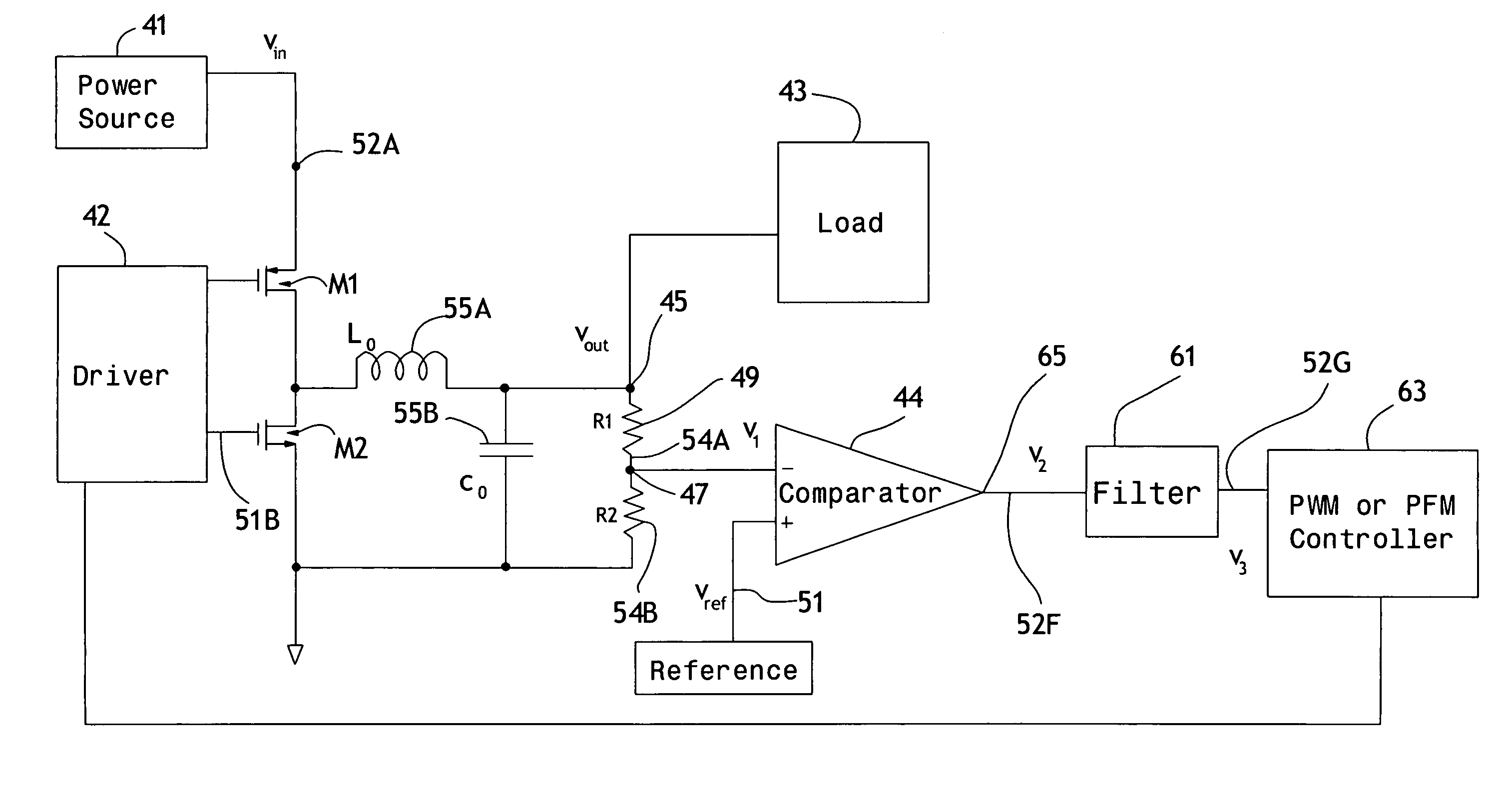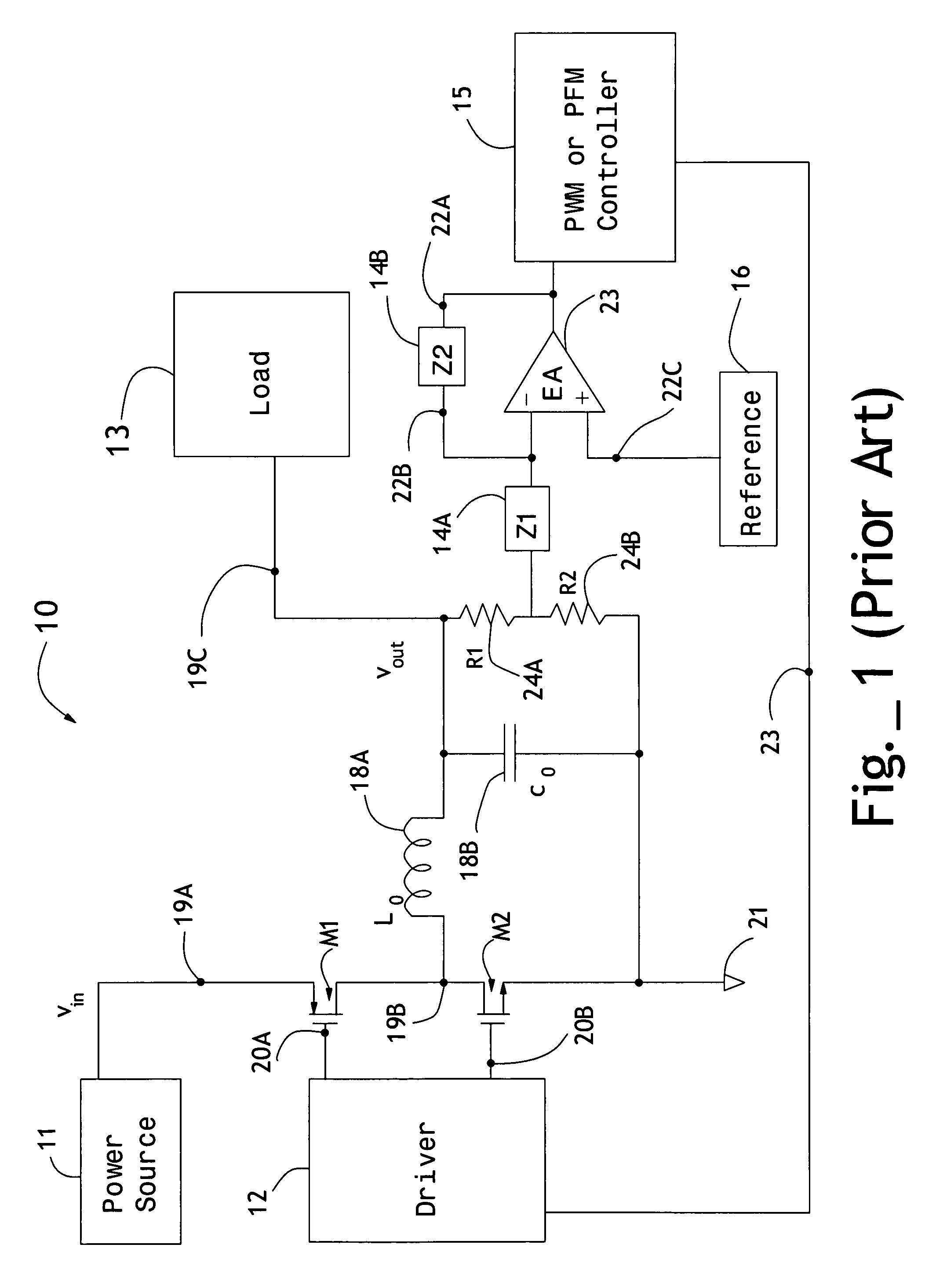Control loop for switching power converters
a power converter and control loop technology, applied in the direction of power conversion systems, dc-dc conversion, instruments, etc., can solve the problems of system instability in a closed loop configuration, error amplifiers, and inability to produce stable controllers, and achieve simple voltage comparators, promote stability in the loop, and simple filters to linearize the nonlinear response of the comparator
- Summary
- Abstract
- Description
- Claims
- Application Information
AI Technical Summary
Benefits of technology
Problems solved by technology
Method used
Image
Examples
Embodiment Construction
[0031]With reference to FIG. 4, the present invention came about with the realization that the function of the linear error amplifier 23 in FIG. 1 and the compensation loads Z1 and Z2 can be replaced with a simple high gain detection circuit with a non-linear response, and a proper filter to create a pseudo linear behavior to regulate the loop. At very low frequencies near DC, the error amplifier behaves like a simple voltage comparator with a very large voltage gain. Yet, it is only at higher frequencies that it can assist in compensating the loop. So, the same behavior can be implemented with components that may not suffer from shortcomings of typical error amplifiers. A non-linear detection circuit such as a voltage comparator is typically more robust to variations in headroom voltage, temperature, and process variations. Hence, its adaptability to these changes can be used to make the entire compensation loop more robust.
[0032]A high gain voltage comparator 44 is used to detect ...
PUM
 Login to View More
Login to View More Abstract
Description
Claims
Application Information
 Login to View More
Login to View More - R&D
- Intellectual Property
- Life Sciences
- Materials
- Tech Scout
- Unparalleled Data Quality
- Higher Quality Content
- 60% Fewer Hallucinations
Browse by: Latest US Patents, China's latest patents, Technical Efficacy Thesaurus, Application Domain, Technology Topic, Popular Technical Reports.
© 2025 PatSnap. All rights reserved.Legal|Privacy policy|Modern Slavery Act Transparency Statement|Sitemap|About US| Contact US: help@patsnap.com



